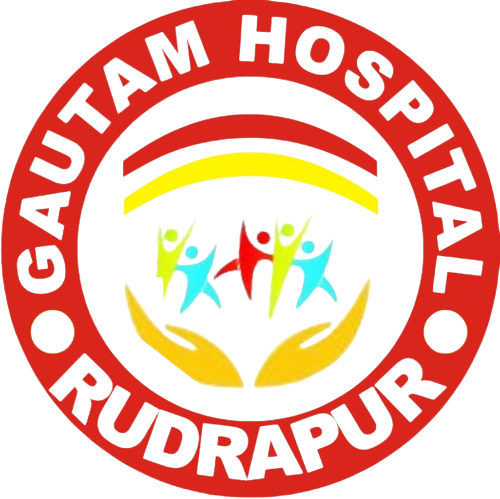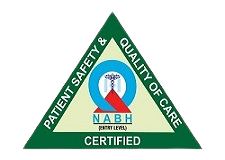
Overview
In general internal medicine, all of the body’s systems are examined to see how they all operate together and how they impact the health and well-being of people. This broad area of medicine combines laboratory science analysis with a more individualized approach to adult treatment.
Physicians who specialize in internal medicine have two major alternatives for career options: primary care and hospitals. Primary care is the focus of attention. Internists give preventive, acute, and chronic care to their patients in general internal medicine over a lengthy time. This kind of treatment is often provided in an ambulatory context, such as a private practice.
Hospital medicine, as the name indicates, is focused on treating patients in a hospital environment who have more complicated or life-threatening diseases that need hospitalization. Hospitalists are doctors whose major job responsibility is to treat patients exclusively when they are in the hospital.
Everything You Need To Know About Internal Medicine
- What is It
- General Medicine vs. Internal Medicine
- Subspecialties
- Condition Treat
- Diagnosis and Treatment
- Why Choose Us
What Is Internal Medicine?
Internal medicine is a medical specialty that focuses on the treatment of adults. It comprises highly educated doctors responsible for a wide range of medical disorders affecting several organ systems. Doctors specializing in internal medicine are sometimes referred to as internists or general internists. They are acknowledged as being specialists in diagnostics, the treatment of chronic diseases, health promotion, and disease prevention, among other things. Even while some doctors choose to pursue a career in internal medicine, others specialize in a more narrowly defined field of medicine, such as gastrointestinal or cardiology.
General Medicine vs Internal Medicine
The primary distinction between internal medicine and general practice is that internal medicine handles illnesses that general practitioners cannot treat at their level of practice. In contrast, general practice treats minor diseases, diagnoses serious conditions, and sends those patients to specialist centers for further care.
In general practice, among the most well-known subfields of medicine, deals with patients’ daily and typically non-serious concerns while also sending them to specialist care units when required. Internal medicine is concerned with treating more severe illnesses that general practitioners are unable to treat at their level of practice.
Internal Medicine Subspecialties
Trainees in internal medicine receive expertise in a variety of fields, including:
- Cardiovascular diseases
- Critical care medicine
- Dermatology
- Endocrinology
- Rheumatology
- Gastroenterology
- Geriatrics
- Gynaecology
- Hematology
- Infectious diseases
- Nephrology
- Neurology
- Non-surgical orthopedics
- Oncology
- Ophthalmology
- Otorhinolaryngology
- Palliative medicine
- Psychiatry
- Pulmonary diseases
- Rehabilitation medicine
- Sleep medicine
Internal medicine residents spend at least one year caring for hospitalized patients, with at least three months spent in intensive care or critical care units. They get at least one year of hospital-based training, as well as extra exposure to in-patient subspecialties like cardiology, hematology-oncology, and gastrointestinal, among others.
Many internal medicine practitioners are subspecialists in a specific field. After completing the necessary three-year internal medicine residency, the extra one to three years of fellowship study is needed to establish experience in various subspecialties.
Internal medicine subspecialties that are recognized include:
- Advanced Heart Failure and Transplant Cardiology
- Allergy and Immunology (immune system)
- Cardiovascular Disease (heart and vascular system)
- Clinical Cardiac Electrophysiology (heart rhythm)
- Critical and intensive care Medicine for patients with multiple organ failure
- Endocrinology (diabetes and other metabolic and glandular disorders)
- Gastroenterology (gastrointestinal system, liver, and gallbladder)
- Haematology (blood)
- Infectious diseases and inflammatory conditions caused by viral, bacterial, fungal, and parasitic infections
- Interventional Cardiology (heart health)
- Nephrology (kidneys)
- Oncology (cancer)
- Pulmonary Disease (lungs and respiratory system)
- Rheumatology (joints and musculoskeletal system)
- Transplant Hepatology (liver)
Condition we treat
Doctors in internal medicine diagnose, monitor, and treat a wide variety of medical disorders. Cancer, infections, and disorders affecting the heart, blood, kidneys, joints, and the digestive, respiratory, and circulatory systems, are examples of what is covered. The following are examples of conditions that internists treat:
- Abnormal uterine bleeding
- Acute bronchitis
- Acute decompensated heart failure
- Acute exacerbations of asthma
- Acute liver failure
- Acute migraine
- Acute pancreatitis
- Acute pulmonary embolism
- Acute respiratory distress syndrome
- Allergic rhinitis
- Anal fissure
- Bacterial brain abscess
- Bleeding peptic ulcers
- Cancer pain
- Cardiac arrest
- Chronic limb-threatening ischemia
- Cognitive impairment and dementia
- Diabetic ketoacidosis and hyperosmolar hyperglycemic state in adults
- Disseminated intravascular coagulation
- Electrocardiographic abnormalities suggesting myocardial ischemia and infarction
- Epilepsy and electroencephalogram (EEG)
- Esophageal Disease
- Exercise-associated hyponatremia
- Failed fibrinolysis (thrombolysis)
- Gastrointestinal infections
- HELLP syndrome (hemolysis, elevated liver enzymes, and low platelets)
- Hyperkalemia
- Hypotonic hyponatremia
- Damage to internal organs by food impactions or ingested foreign bodies
- Lower gastrointestinal bleeding
- Lyme disease
- Mechanical colorectal obstruction
- Mechanical small-bowel obstruction
- Metabolic acidosis in chronic kidney disease
- Metabolic alkalosis
- Neoplastic epidural spinal-cord compression
- Neuromuscular Disease
- Neuropathies
- Non-HIV viral infections
- Osteonecrosis (avascular necrosis of bone)
- Ovarian and fallopian-tube torsion
- Pelvic inflammatory Disease
- Peripheral nerve and muscle disease
- Pregnancy complications
- Pulmonary infections
- Retinal detachment
- Severe Crohn’s Disease
- Severe hypovolemia or hypovolemic shock
- Sickle cell disease
- Simple and mixed acid-base disorders
- Spinal epidural abscess
- Subacute kidney injury
- Suspected heart problems like unstable angina or myocardial infarction
- Thyroid storm
- Transient ischemic attack (TIA)
- Tubo-ovarian abscess
- Unexplained thrombocytopenia
- Upper gastrointestinal bleeding
- Urinary tract obstruction and hydronephrosis
- Ventricular arrhythmias
- Vertigo
Diagnosis and Treatment in Internal Medicine
Internal medicine professionals conduct or prescribe tests, treatments, and operations depending on the state of the patient, their general health, and their wellness objectives.
Internists are on the front lines of oropharyngeal cancer screening as the prevalence of head and neck tumors rise. All persons 18 and older should be checked yearly, according to the Centers for Disease Control and Prevention (CDC).
Internists, like nurses and other healthcare practitioners, are educated to execute a wide range of medical operations, the application of which varies widely depending on the specialty, diagnosis, and treatment. To conduct these treatments and limit patient suffering, maximize results, and eliminate side effects, providers require expertise and competence — and in many instances, extra training and medical qualifications.
Internal medicine doctors often undertake the following procedures:
- Arterial puncture to analyze blood gases
- Endotracheal intubation
- Flexible sigmoidoscopy
- Intravenous (IV) line insertion
- Nasogastric (NG) tube placement
- Urinary catheters placement
- Venipuncture (“blood draw”) to test blood
A few internists have received further training in more invasive diagnostic and therapeutic procedures, such as thoracentesis and lumbar puncture.
An internist may do the following tests and procedures, among others:
- Allergy
Rhinoscopy and skin testing
- Cardiology
Cardiac stress testing, coronary catheterization, echocardiograms, angioplasty, pacemakers, stent insertion, implantable defibrillators, electrophysiology testing and ablation, cardioversion, and the implantation of intra-aortic and intra-ventricular devices are some of the procedures that are performed.
- Endocrinology
Thyroid biopsy, bone density testing, and hormone testing are all options.
- Gastroenterology
Endoscopy of the upper and lower gastrointestinal tracts, endoscopic ultrasound, endoscopic retrograde cholangiopancreatography (ERCP), esophageal manometry, stent implantation, and liver biopsy
- Hematology/oncology
Biopsy of the bone marrow, stem cell transplantation, lymph node biopsy, and plasmapheresis
- Pulmonary
Intubation and ventilator management, tracheostomy placement, chest tube thoracostomy, bronchoscopy
- Renal
Dialysis and kidney biopsy
- Rheumatology
Joint aspiration and therapeutic injection
Ultrasound, computed tomography (CT), and magnetic resonance imaging (MRI) guide invasive operations in internal medicine and many other medical specialties. Flexible fiberoptic tools may be used to reach parts of the body that are difficult to reach.
Why choose Gautam Hospital?
The Gautam Hospital is a well-known internal medical hospital. We believe in treating all our patients with utmost care and dignity. The departments of this hospital have experienced professionals who are accessible to treat their patients 24 hours, seven days a week, and make every effort to offer the finest treatment possible. Furthermore, in an emergency, this facility is fully trustworthy. Our vision is to provide all necessary medical services under one roof to give patients the best outcomes and improve their quality of life.

